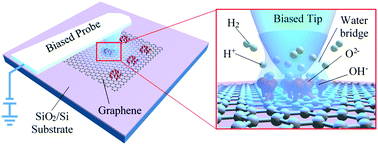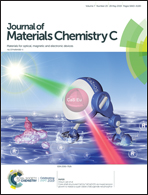Dual control of the nanofriction of graphene†
Abstract
The tunable nanofriction of graphene as a lubricant material is important for its application in micro/nano-electromechanical devices. A tunable nanofriction array of graphene on a silicon dioxide/silicon (SiO2/Si) substrate was achieved via functionalization using negative-bias conductive atomic force microscopy by introducing an electron releasing process to avoid electron saturation. Based on the electron releasing process, the functionalization degree of graphene and thus the nanofriction were controllably tuned by the tip voltage. Moreover, the nanofriction of the functionalized array was further enhanced by applying biased tip voltage. The nanofriction on the functionalized array increased with an increase in bias voltage due to the polarization-induced electrostatic force, and the voltage increased the meniscus force. The tuning of the nanofriction of functionalized graphene on an insulating substrate can provide insight into the electric-carrying friction behavior of graphene as a solid lubricant in micro/nano-electromechanical systems (MEMS/NEMS) and the fabrication of nanodevices with a patterned surface.



 Please wait while we load your content...
Please wait while we load your content...